Frozen in time: 10 prehistoric animals found trapped in ice
These 10 frozen prehistoric creatures from around are stunningly preserved and provide tantalizing clues about their lives — from what they ate to how they died.
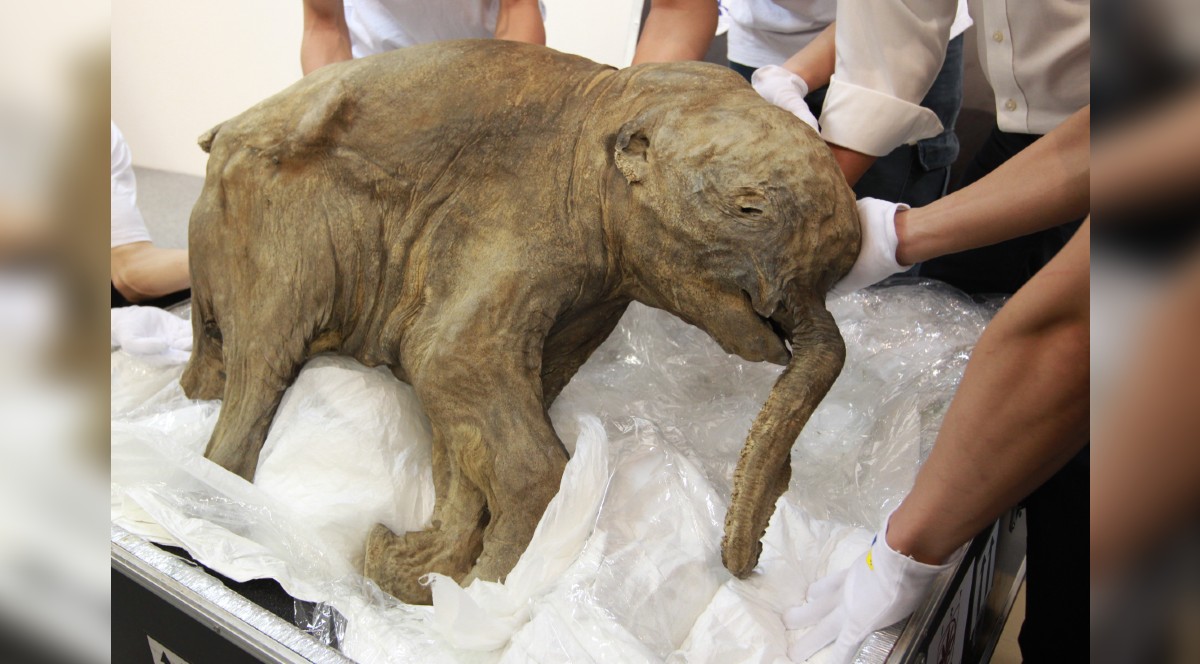
Long-extinct animals in superbly preserved time capsules are being unearthed in permafrost from across the planet — from Canada’s Yukon territory to Antarctica — enabling scientists a glimpse into the past. These frozen, prehistoric animals are often found in stunning condition and are now famous around the world.
1. Woolly rhino baby
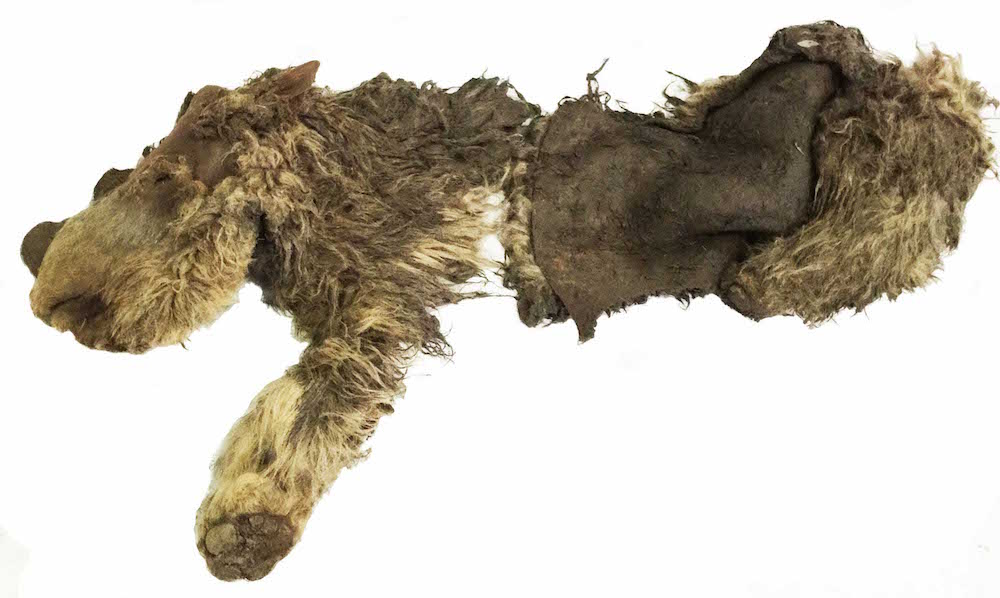
This 10,000-year-old woolly rhino (Coelodonta antiquitatis) baby, nicknamed Sasha by the man who found it, was the first young member of its species ever discovered. Researchers aren’t sure if it is male or female, but the horn size suggests it had been weaned by the time it died. It roamed the mammoth steppe — a dry, cold region from modern-day Spain to Siberia.
2. Cave lion cub
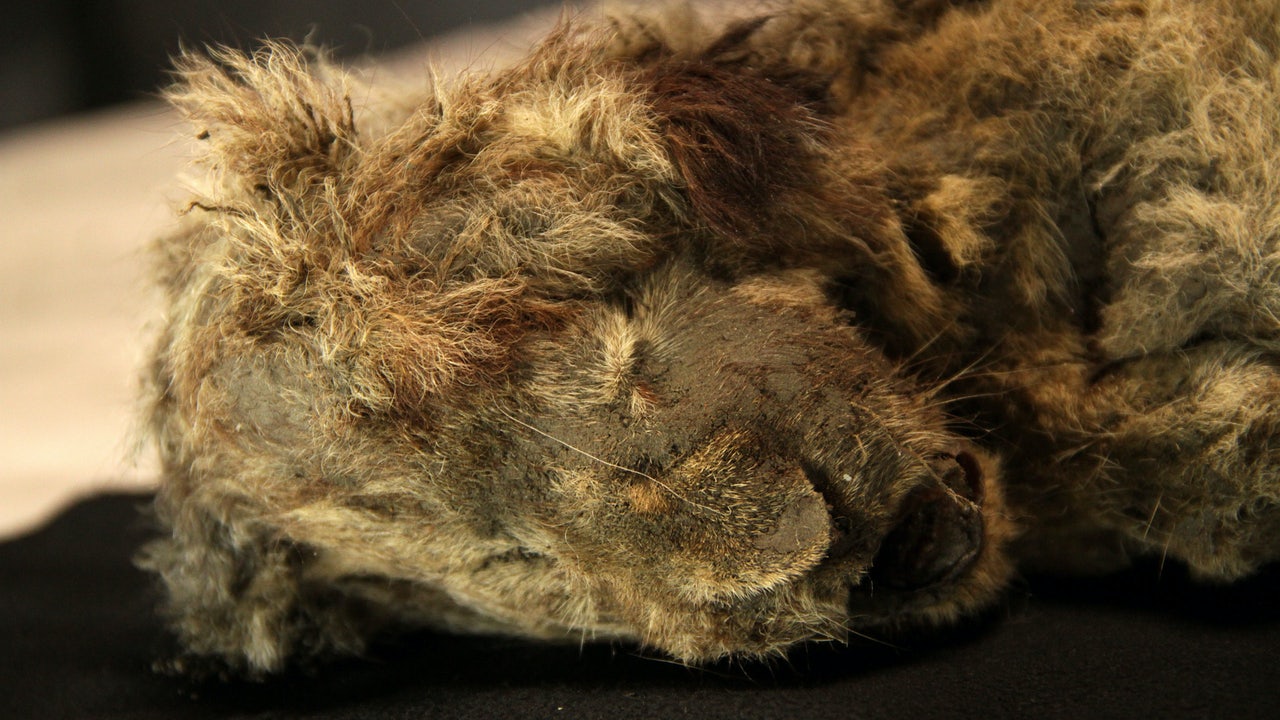
Scientists unearthed this squashed, mummified cat in eastern Siberia in 2017. The specimen is a female cave lion (Panthera spelaea) cub, which scientists named Sparta. This prehistoric animal likely died suddenly, possibly during a mudslide. Sparta is one the best-preserved ice age animals ever found — even her whiskers can still be seen.
3. Mammoth calves

In 2007, explorers unearthed two mammoth calves, which they nicknamed Lyuba and Khroma, dating to about 40,000 years ago in two different areas of Siberia. Researchers took a closer look at the animals using CT scans and discovered that both baby mammoths had choked on mud after falling into water. The little mammoths appeared otherwise plump and healthy when they died — Khromaeven had a stomach full of undigested breast milk that looked like yogurt.
4. Ancient bison
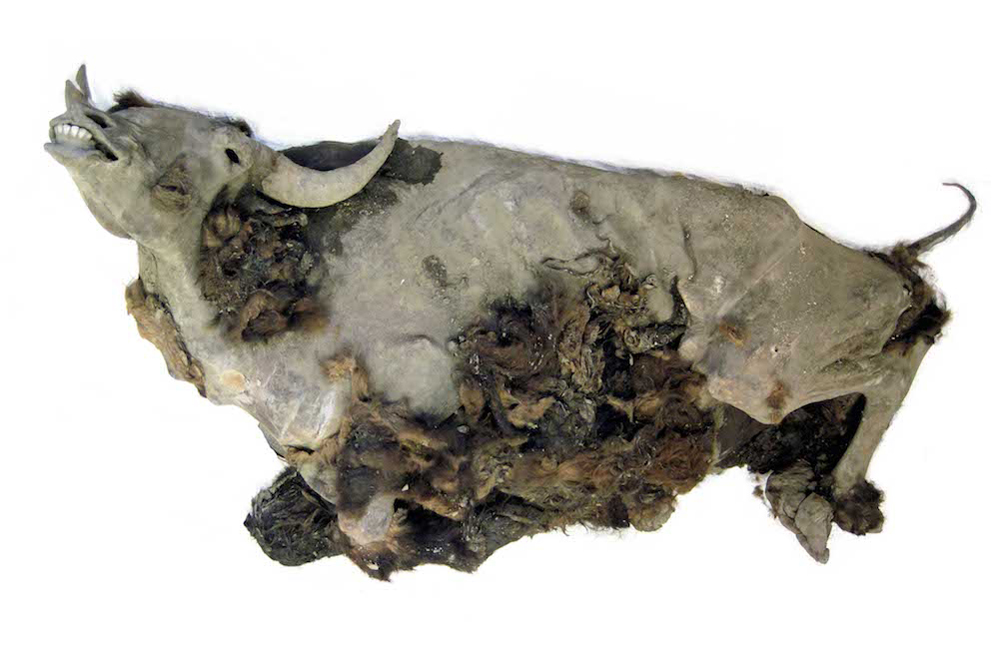
Some of the most complete steppe bison (Bison priscus) remains ever found are 9,000 years old. The preserved animal, unearthed in northern Siberia in 2011, has a complete heart, brain and digestive system. Some of its organs have shrunk over time, but its blood vessels are in near-perfect condition.
This is not the only steppe bison, which went extinct around 10,000 years ago, that’s been found frozen in time. In 2022, researchers in Russia completed a necropsy on an 8,000-year-old steppe bison that is so well preserved some scientists believe it could be cloned using intact chromosomes extracted from the bison's skin, muscle and wool.
5. Frozen foal
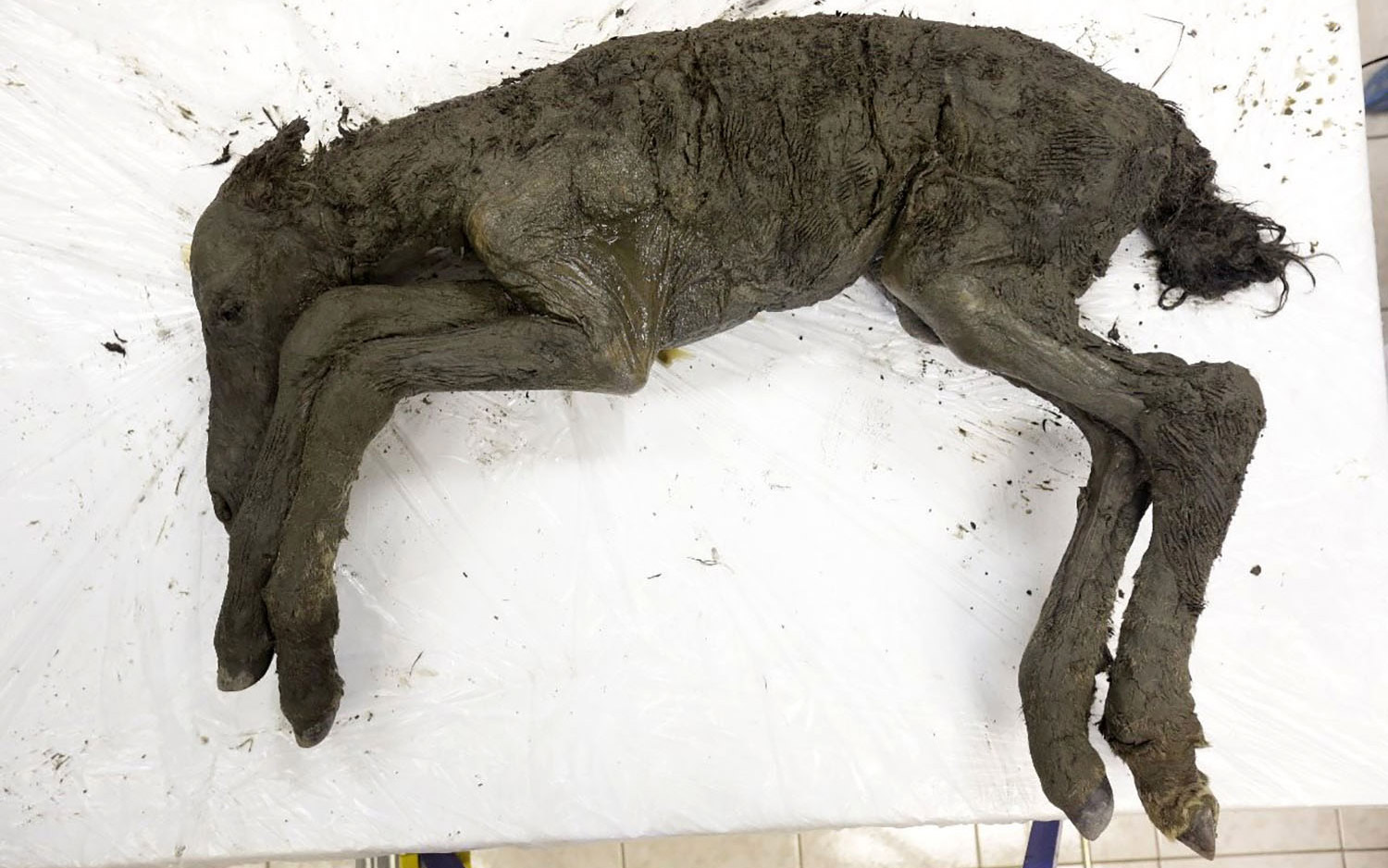
A 2-month-old horse that died between 30,000 and 40,000 years ago was discovered around 330 feet (100 meters) below the surface in a Siberian crater in 2018. In life, the young horse stood almost 3 feet (1 m) tall, and its remains were kept so pristine by ice that its hooves, skin and tail are still intact, along with tiny hairs that are still visible inside the foal's nostrils.
Get the world’s most fascinating discoveries delivered straight to your inbox.
6. Prehistoric bear

In 2020, reindeer herders discovered the remains of a mummified bear in Siberian permafrost. Initially, researchers believed the remains belonged to a cave bear (Ursus spelaeus), which went extinct about 22,000 years ago, but further analysis in 2022 revealed the mummified animal is actually the 3,460-year-old remains of a female brown bear (Ursus arctos) that was likely 2 to 3 years old when she died.
7. Mummified mammoth

In 2022, gold miners excavated a 30,000-year-old baby woolly mammoth (Mammuthus primigenius) from Canadian permafrost. The 4.5 feet-long (1.4 m) remains belong to a female calf and are so well-preserved, the prehistoric animal's hair and skin are still intact. The mammoth, named Nun Cho Ga, is believed to be the most complete mummified mammoth found in North America.
8. Prehistoric penguin colony

In 2016, in Cape Irizar — a rocky headland in Antarctica — scientists unearthed all the telltale signs of a freshly abandoned Adélie penguin colony — including dead penguins, bones and guano-stained pebbles. But researchers were puzzled, because Adélies (Pygoscelis adeliae) hadn’t been seen in the area for hundreds of years. It turns out that a period of melting on the frozen continent revealed the mummified remains, along with bones and eggshells, and are thought to be between 800 and 5,000 years old.
9. Hibernating squirrel

At first glance, this ball of fur and claws might not seem like much. However, X-ray scans revealed it to be a mummified squirrel that had curled up for hibernation 30,000 years ago. The well-preserved ancient animal is an Arctic ground squirrel (Urocitellus parryii), and the species still exists today and lives in the area where the mummified specimen was found, in Canada's Yukon territory.
10. Preserved wolf pup

In 2016, Canadian gold miners discovered a female wolf pup specimen that has been preserved in permafrost for 57,000 years. X-ray analysis revealed that the gray wolf (Canis lupus) pup, now named Zhùr, was only 7 weeks old when she died. Researchers hypothesized that her den may have collapsed, killing the pup and helping keep the body preserved.
This article was adapted from a previous version published in How It Works magazine, a Future Ltd. publication. To learn more about the wonders of the natural world, subscribe to How It Works magazine.
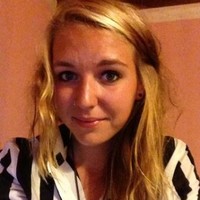
Amy Grisdale is a freelance writer and wildlife guide based on the south coast of the U.K., who has written for publications such as World of Animals, How It Works, History of War and Gadget magazine. Amy has an enormous breadth of experience on animal conservation projects. She has a degree in Marine Biology and Animal Behaviour from Anglia Ruskin University and specialises in writing about environmental topics.
- Scott DutfieldContributor
